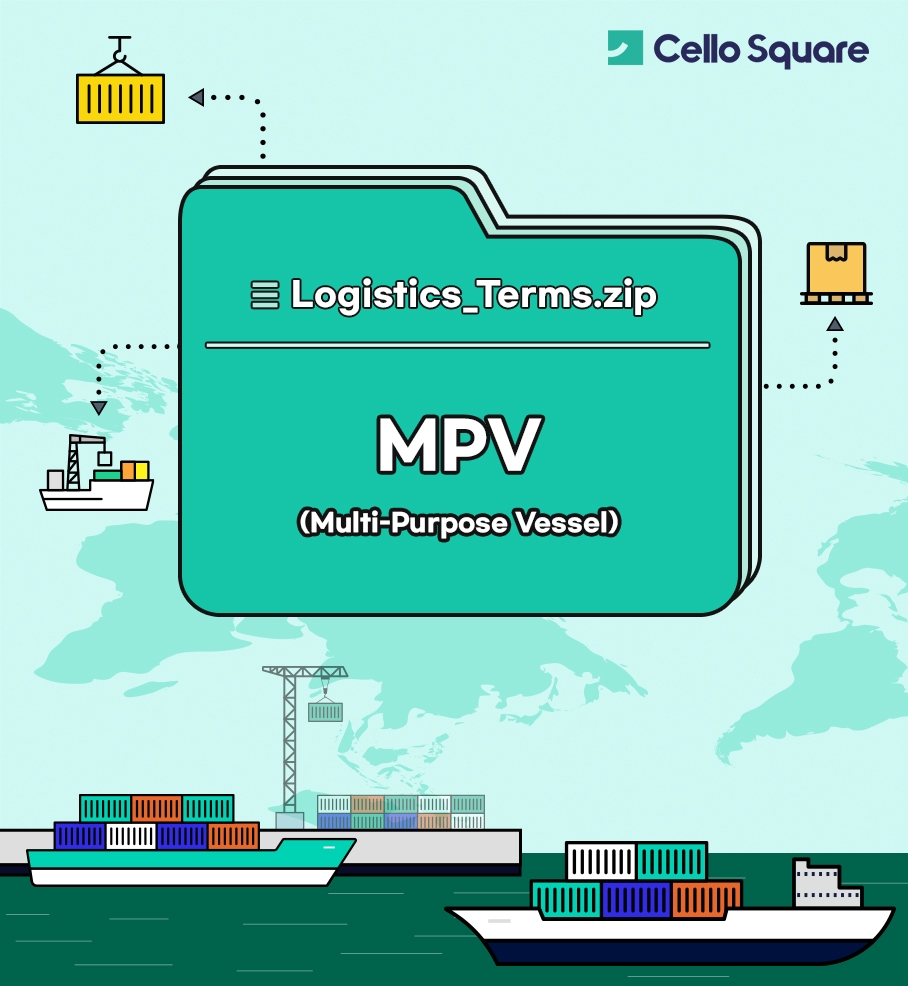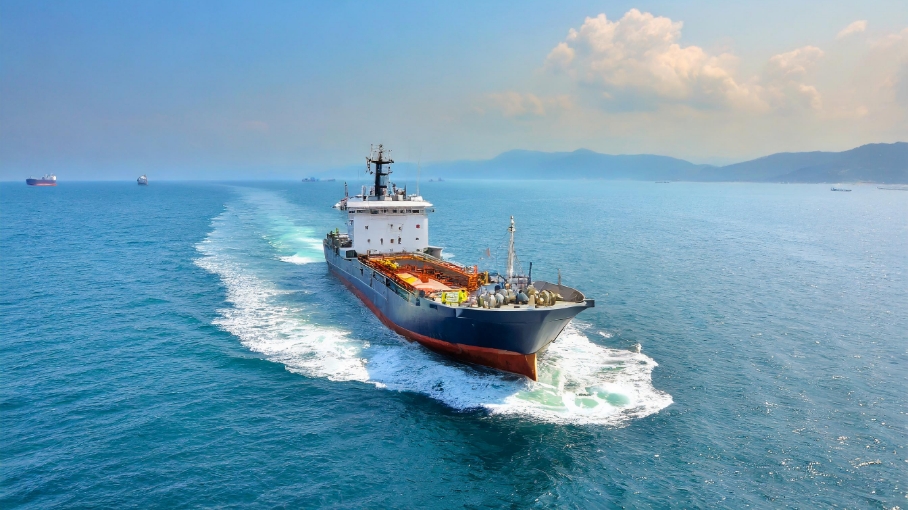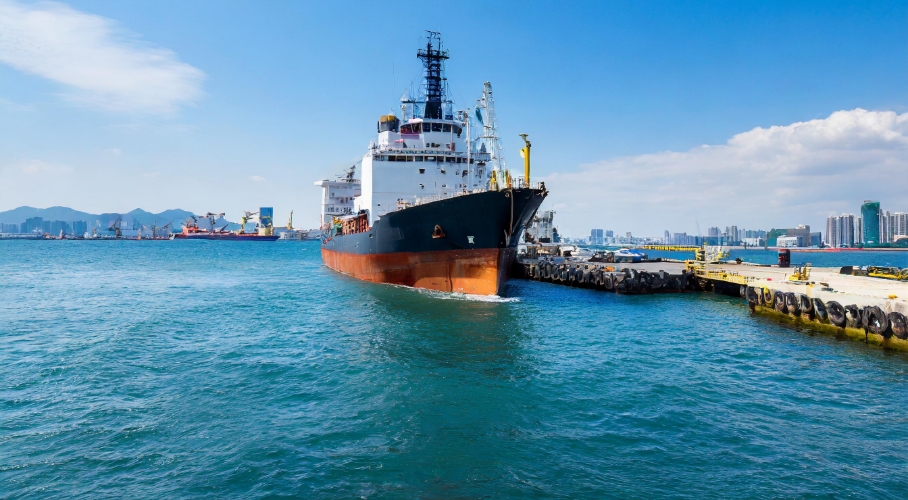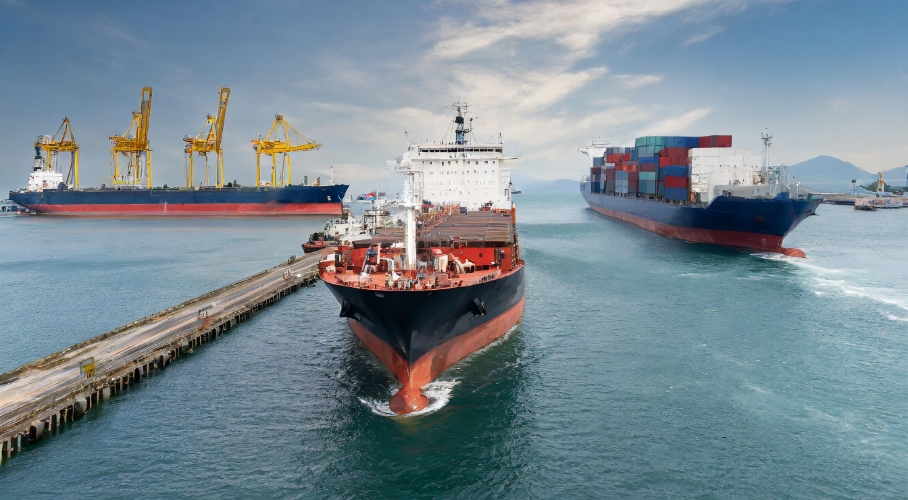

Multi-Purpose Vessels (MPVs) offer greater flexibility and efficiency compared to traditional bulk carriers and container ships. MPVs are ships designed to transport various types of cargo together in a single voyage. They have hold configurations allowing the carriage of containers, breakbulk, project cargo, and bulk commodities like grain, ore, and oil all at once. Examples of cargoes that MPVs are typically tasked with transporting include:
- Wood: This includes logs, lumber, and other wood products that require specific stowage and handling procedures to maintain their integrity during transport.
- Steel: MPVs carry various forms of steel products, such as coils, sheets, beams, and rebars. These items often require special handling and stowage to prevent damage and ensure safety.
- Building Materials: This broad category includes items like cement, bricks, tiles, and other construction-related materials that are essential for infrastructure projects around the world.
- Rolls of Paper: Paper products, including large rolls of paper for printing and publishing, demand careful handling to avoid damage from moisture, pressure, or mishandling.
- Bulk Cargo: MPVs are also equipped to handle bulk cargoes, which can include grains, coal, ores, and other unpackaged bulk goods. These cargoes are typically loaded directly into the vessel's cargo holds.
Multi-purpose vessels can be divided into four categories: vessels with and without cargo gear, coastal trade liners and sea-river vessels. Each category serves a specific purpose, tailored to meet the diverse needs of cargo transportation across global and local waters. Let's take a closer look at these categories and their unique capabilities:
1. Vessels with Cargo Gear
These MPVs are equipped with their own loading and unloading equipment, such as cranes and derricks. This feature allows them to operate independently of port facilities, which is particularly beneficial in ports with limited infrastructure. The ability to self-load and unload can significantly reduce waiting times at ports and increase operational efficiency.
2. Vessels without Cargo Gear
These rely on port infrastructure for loading and unloading operations. While they might lack the autonomous capabilities of their geared counterparts, these vessels often have larger cargo capacities or are optimized for specific types of cargo. Their operation can be more cost-effective in well-equipped ports where loading and unloading infrastructure is readily available.
3. Coastal Trade Liners
Designed primarily for shorter sea journeys, coastal trade liners operate along coastlines and between neighboring countries. These vessels are typically smaller, allowing them to navigate through shallower waters and access smaller ports that are inaccessible to larger ships. They play a crucial role in domestic and regional trade, transporting goods efficiently along coastal routes.
4. Sea-River Vessels
Uniquely designed to navigate both in the open sea and on inland waterways, sea-river vessels are versatile ships that can reach ports located far inland. Their design takes into account the limitations of river depths and bridge heights, making them invaluable for transporting goods to areas that would otherwise require additional land transportation.
Larger MPVs are capable of carrying a diverse range of cargoes on a single voyage, offering a significant advantage in terms of flexibility and cargo consolidation. This capability allows shippers to maximize efficiency and reduce costs by combining different types of cargo for the same destination. In contrast, smaller MPVs, although they may not offer the same level of cargo versatility, are indispensable for reaching smaller harbors with limited draught access. Their ability to operate in such conditions ensures that goods can be delivered closer to their final destination, enhancing the overall efficiency of the supply chain. (Source: Firefly, Adobe)
(Source: Firefly, Adobe)
The benefits of Multi-Purpose Vessels (MPVs) in the logistics and maritime sectors are multifaceted, underscoring their pivotal role in enhancing the efficiency, cost-effectiveness, and adaptability of global shipping operations. These vessels offer significant advantages that cater to the dynamic needs of the modern trade environment:
1. Flexibility
MPVs stand out for their ability to adjust cargo intake based on market demand, allowing shipping companies to optimize asset utilization and improve fleet planning. This flexibility is crucial in responding to the fluctuating needs of the global market, ensuring that cargo space is used efficiently and adaptively.
2. Consolidation
The capability of MPVs to transport different types of cargo together on a single voyage is a key benefit. It reduces the necessity for multiple ships, leading to significant cost savings through economies of scale. Consolidation maximizes the cargo capacity of vessels, decreases the number of voyages needed to transport the same amount of goods, and ultimately lowers operational costs.
3. Accessibility
Equipped with onboard cranes and other cargo handling gear, MPVs can operate in ports with limited or no loading and unloading infrastructure. This accessibility allows them to serve a wider range of ports, including smaller or less developed ones, enhancing the connectivity and reach of global trade networks.
4. Efficiency
By carrying a mix of cargo types, MPVs generate more revenue per voyage compared to vessels dedicated to a single type of cargo. Additionally, the capability to self-load and unload reduces port stays, further increasing vessel utilization rates. This efficiency not only boosts revenue but also reduces the carbon footprint per unit of cargo transported, contributing to more sustainable shipping practices.
5. Versatility
MPVs are adept at serving both tramp and liner trade, demonstrating an exceptional level of versatility. They can be employed for various roles, from transporting project cargo, such as heavy machinery and oversized items, to feedering containers between major ports and smaller regional hubs. This versatility makes MPVs invaluable assets in the shipping industry, capable of adapting to diverse operational requirements and market conditions.
In summary, the benefits of MPVs highlight their integral role in modern maritime logistics, offering solutions that are flexible, cost-effective, efficient, and adaptable. These vessels facilitate a more interconnected and dynamic global trade system, capable of meeting the ever-evolving demands of markets worldwide. (Source: Firefly, Adobe)
(Source: Firefly, Adobe)
Container ships and Multi-Purpose Vessels (MPVs) are two key players in the maritime industry, each serving distinct but crucial roles in global logistics and trade. Their differences span across various aspects such as size, design, purpose, and versatility, making each suitable for specific types of cargo and shipping routes.
1. SizeContainer Ships: These vessels are designed to carry containerized cargo, with sizes ranging significantly from small feeder ships that carry a few hundred TEUs (Twenty-Foot Equivalent Units) to ultra-large container ships that can carry over 20,000 TEUs. The size of a container ship is often directly related to its route, with larger vessels serving major global trade routes and smaller ones operating in regional or feeder routes.
MPVs: Multi-Purpose Vessels vary widely in size, but they are generally smaller than the largest container ships. Their design focuses on versatility rather than maximum container capacity, allowing them to carry a wide range of cargo types, including bulk, breakbulk, project cargoes, and containers. Their size is often determined by the need to access smaller or less developed ports with limited infrastructure.
2. Purpose and Cargo
Container Ships: These are specialized vessels designed exclusively for transporting containerized cargo. They are optimized for speed and efficiency in loading, unloading, and transporting containers, which makes them the backbone of international trade for manufactured goods.
MPVs: These vessels are designed for flexibility and can carry a mix of cargo types, including bulk, breakbulk, heavy-lift, and containerized cargoes. MPVs are particularly valuable for transporting cargoes that do not fit well into containers or for serving routes and ports where a variety of cargo types are traded.
3. Design and Features
Container Ships: The design of container ships is streamlined for container transport, featuring large, open decks and massive cargo holds designed to stack containers efficiently. They lack onboard cranes in most cases, relying on port infrastructure for loading and unloading.
MPVs: MPVs feature a more complex design that accommodates a variety of cargo types. Many are equipped with onboard cranes and adjustable decks, allowing them to load and unload in ports with limited facilities. Their design is more focused on flexibility than on maximizing container capacity.
4. Operational Flexibility
Container Ships: These ships operate on fixed routes (liner services) with scheduled port calls, transporting goods between major commercial ports. Their operations are highly efficient but less flexible, as they are tailored to the needs of containerized cargo movement.
MPVs: MPVs offer greater operational flexibility. They can operate both in liner and tramp services, adapting their routes based on cargo demand. This flexibility allows them to serve a wider range of ports, including those that are not accessible to large container ships, and to transport cargoes that require special handling.
In conclusion, while container ships are the workhorses of standardized, containerized cargo movement, MPVs provide a versatile solution for a broader range of cargo types and less accessible ports. The choice between using a container ship or an MPV depends on the specific needs of the cargo, the ports of origin and destination, and the desired level of flexibility in the shipping operation.
 (Source: Firefly, Adobe)
(Source: Firefly, Adobe)
The maritime industry is witnessing several innovative trends in the development and operation of Multi-Purpose Vessels (MPVs) as it adapts to the evolving demands of global trade, environmental regulations, and technological advancements. These trends not only aim to enhance operational efficiency and flexibility but also to address the increasing focus on sustainability and digitalization within the sector.
1. Eco-Friendly Operations
There's a growing trend towards eco-friendly MPVs that incorporate green technologies to reduce emissions and improve fuel efficiency. This includes the adoption of LNG (Liquefied Natural Gas) as an alternative fuel, the use of scrubber systems to clean exhaust gases, and the implementation of advanced hull designs and coatings to minimize resistance and save energy. Additionally, some vessels are being equipped with solar panels and wind propulsion systems as supplementary power sources to further decrease their environmental footprint.
2. Enhanced Cargo Handling and Flexibility
The latest MPVs are being designed with enhanced cargo handling systems and greater flexibility to accommodate a wider variety of cargo types. Innovations in onboard crane technology and adjustable deck systems allow for faster loading and unloading, as well as the ability to customize cargo spaces for different needs on a voyage-by-voyage basis. This adaptability is crucial for efficiently serving the varied requirements of global trade, from heavy-lift project cargoes to breakbulk and containerized goods.
3. Digitalization and Connectivity
Digital technologies are increasingly being integrated into MPVs to improve operational efficiency, safety, and communication. This includes the use of IoT (Internet of Things) devices for real-time cargo monitoring, and AI (Artificial Intelligence) for optimizing routes and cargo loading plans.
4. Focus on Smaller, More Efficient Vessels
There's a noticeable shift towards smaller, more efficient MPVs that can access a broader range of ports and navigate shallower waters, opening up new trade routes and markets. These vessels are designed to be agile, with the capability to operate effectively in both developed and emerging regions, thereby enhancing global trade connectivity.
With their unparalleled capability to transport a diverse array of cargo types in a single voyage, MPVs offer a level of productivity and versatility that is unmatched by more traditional vessel types. This adaptability not only makes them invaluable assets in the face of fluctuating market demands but also allows shippers to significantly optimize their networks and improve asset utilization. As the logistics landscape continues to evolve, driven by the relentless push for cost-effectiveness, environmental responsibility, and technological innovation, MPVs are increasing adoption and importance.